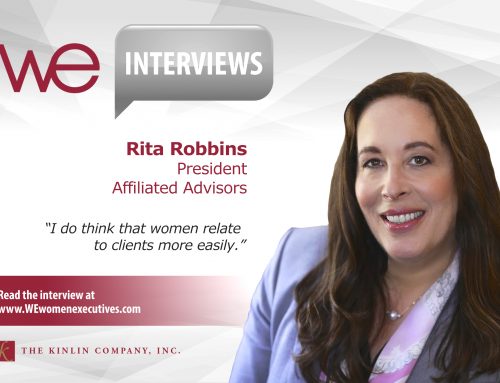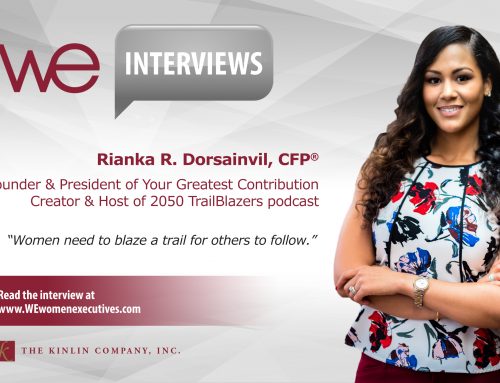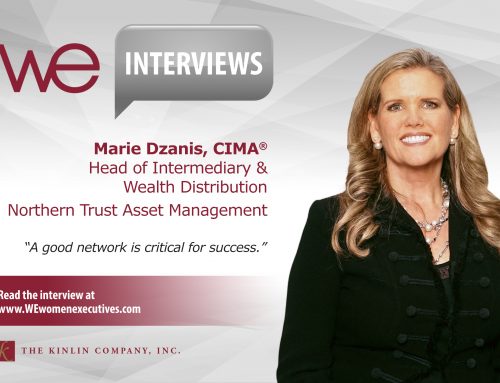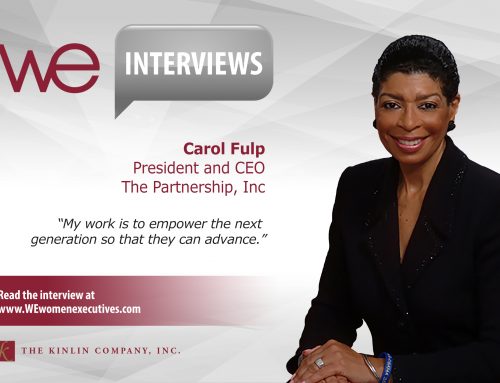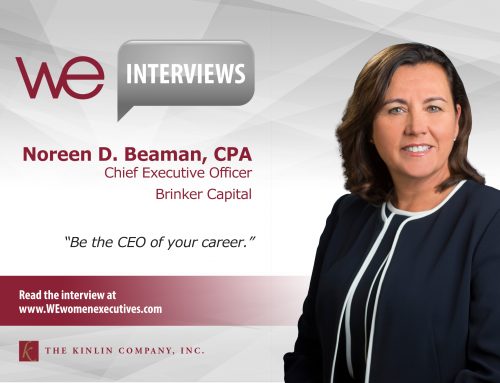 Katherine Collins
Katherine Collins
Head of Sustainable Investing
Putnam Investments
As Head of Sustainable Investing at Putnam Investments, Katherine Collins sits on the front lines of a growing trend in the investment field. Reporting to Aaron Cooper, Putnam’s CIO of Equities, Katherine works most closely with Stephanie Henderson, a fundamental analyst, and Alex Rickson, a quantitative analyst, but is quick to note that her group is integral to Putnam’s full investment team. “Our team is part of the organization as a whole, not a specialized unit off to the side. That’s something that’s still fairly unusual for people engaged in sustainable investing, and it’s the number one reason I chose to join Putnam.”
Katherine and her team have three charges: to raise Putnam’s fluency when it comes to sustainability and ESG-oriented issues; to think about dedicated products and strategies in this arena and what Putnam specifically could bring to the table; and to contribute to the broader development of the field of sustainable investing over time.
I recently sat down with Katherine to discuss the opportunities she sees in sustainable investing, the concept of biomimicry and its role in investing, and her reasons for choosing to pursue ESG with Putnam.
A broader scope of possibility
Aaron Cooper has described you as “one of the deans of ESG investing.” Given your history and expertise in this niche, what opportunities are you focusing on as you look down the road?
“There are two main developments that have broadened the scope of what’s possible in this arena. One is that, increasingly, we have more data – and better data – with which to assess environmental, social and governance factors for individual companies. This has been a long time coming, and it’s still very much a work-in-progress, but we are gaining empirical information that allows us to ask different types of questions.
“Secondly, we have seen a dramatic rise in companies that are not only well run, but also focused on providing solutions to an existing challenge. For example, instead of a grocery store that manages its supply chain effectively, you might find a food company where the supply chain is sustainably managed, plus the product itself is directly providing better health to customers. Together these two elements – the increase in data and the increase in solutions-oriented companies – have widened the scope for what’s possible, particularly in the public markets.”
A greater understanding of culture
Having gained a sense of how the ESG landscape has shifted in recent years, I was eager to get Katherine’s response to Putnam Investments’ CEO Bob Reynolds’ remark that ESG investing is “redefining what asset management can accomplish. It is a concept that is becoming increasingly synonymous with good long-term investing and is serving to help identify opportunities.” Can you speak to these observations?
“To put that remark in context, it’s helpful to back up and think about what an investor is hoping to accomplish in the first place, particularly a fundamental investor whose goal is to understand a company in the most complete, deep and long-term context. If that’s your mission – and it should be your mission – you have two essential challenges. One challenge is that most of our data is backward-looking, but an investor needs to be forward-looking. Additionally, many of our tools were developed in an era when tangible assets – like land, buildings, and machines – were most of a company’s value. These days, intangible assets – like brand value and intellectual property – make up more than 80% of the value of the S&P 500, and we need different tools to assess those intangible assets. Incorporating ESG factors into investment analysis helps us both to look forward and to assess those intangible assets in a more complete, thoughtful way.
“For example, if you really want to understand the intangible value of a company’s brand, you need to wonder, what are people’s priorities when they come to work in the morning? What is the organization’s underlying culture, internal values and incentives? This is not information that shows up directly in traditional financial metrics, but you can get a better sense of it through careful ESG analysis. And if you understand these questions, you’re a better investor.”
A deeper appreciation of natural systems
Katherine’s references to underlying cultures and values offered a perfect segue into my next question. Isn’t this what’s known as biomimicry? Can you explain what that means and how it differs from a typical investment approach?
“The basic premise of biomimicry is the idea that nature is not just a storehouse of stuff for us to harvest, but rather a library for us to reference. There’s great wisdom embedded in natural systems and natural organisms, and if we gain a greater understanding of those systems, we can design better products and services.
“This is relevant to investing because, over the course of my career, our field has changed dramatically. When I began investing professionally, if you really wanted data on a company, you would go to the library and look up – on paper – what revenues were last year, or how much debt the company held. Investing was a craft. These days, we have created approaches that are much more automated. There are some efficiencies in the newer approach, to be sure, but they have a tendency to make us think of investing as something more like a manufacturing factory, with a very industrial mindset.
“If you look at the tools we’ve developed under this mindset, they are helpful, but also very specific in their purpose, often focused on efficiency or speed, as opposed to a deeper form of effectiveness. If we take those hyper-efficient tools and combine them with other approaches that help to consider the value of redundancy, or adaptability, or flexibility – the things that you find in natural systems – then you’ve got a more complete combination of tools to work with. So, from my perspective as an investor, I found studying natural systems inspiring in and of itself, and I also saw those concepts as valuable complements and counterbalances to the default mechanisms of finance.”
Can you give an example of what a perfect investment fund using biomimicry would look like?
“I think of biomimicry, ESG analysis, and sustainable investment practice as systems that widen our field of vision to create a more complete view of things. An effective sustainability-oriented fund will be great on traditional measures: it should have strong financial returns, solid risk management and thoughtful portfolio construction. Additionally, we want to be able to explain the impacts of those investments as they ripple out into the world. For example, are the people who are supplying those companies better off because they are engaged in that endeavor? Are customers or the environment better off because of those products? Is the company well governed and serving as an example to other companies that want to be run in the most thoughtful and effective way?
“In other words, it’s taking that single dimension of financial return and adding analysis of those outward ripples, to understand what investments actually create in the world. The reason this is so important is that we’ve reduced our measurement and conversations for a lot of investment activity down to a simple utility function – money in, money out – and yet that’s just a small part of the true purpose and impact of investing. We also want to know, ‘What am I actually investing in?’ ‘How does that relate to the world that I’m living in?’ and ‘What is it that I’m fostering with this investment?’ Many investors are interested in this more complete set of questions, yet instead of widening our scope and deepening those connections over the last 20 or 30 years, we’ve done the opposite; we’ve created forms of investing that are more and more removed from the actual world we live in. The wisdom embedded in biomimicry and sustainable investing starts to reconnect investing with the real world.”
Can you give an example of a company that would be perfect for this approach?
“I could tell you the characteristics that we would look for, which are closely aligned with biomimicry principles. Again, we do look at all the standard measures I’ve used for over 25 years as an investor – the fundamentals of the company and the valuation – since these are still essential elements. Then we extend both of those frameworks to ask questions such as, ‘Are those fundamentals sustainable, or is the company borrowing from the future to create current results?’ ‘What benefit is the company providing to its customers, its employees, and its communities?’ ‘Can we see evidence of the company’s purpose reflected in its day to day operations, its governance, and its management?’
“I’ll give you a quick example. I was looking at two manufacturing companies last week, and looking at the first layer of data, they’re both very energy and materials-intensive companies, so the environmental intensity for both is fairly high. Yet the output of the first company is an amazing product that saves energy every single time it’s used, while the output of the second company was a product that is also very energy intensive, using more and more resources as it is employed in the world. That’s the kind of second-order impact that we want to be assessing. These kinds of questions are already familiar to anyone who has performed thoughtful fundamental analysis over time, and ESG data, biomimicry, and sustainable investing practices give us additional tools.”
A commitment to thinking
My next question is focused on Katherine’s book, The Nature of Investing: Resilient Investment Strategies Through Biomimicry (Routledge, 2014). How did you become interested in ESG, I asked, and what led you to author a book on the subject?
“Growing up in Pennsylvania, my dad worked for IBM, and the motto of IBM was ‘Think.’ My dad had pads of paper that said ‘Think’ on them, the pencils said ‘Think,’ the coffee mugs said ‘Think’ – it was everywhere. It wasn’t until I finished college and was analyzing many different companies that I realized not every workplace asks their employees to Think. Luckily, this idea is still pretty common in the investment world, and I have my dad’s Think sign with me here in the office. Whenever I get a little bit lost or feel like my analysis is becoming convoluted, this brings me back to home base. It reminds me, ‘Hey, your job is to Think. Take a deep breath, take a step back from whatever you’re stuck on, and consider the issue in its full context.’ In other words, not only are you called upon to use your full brain in all its creativity every day, but that this should also be an inward and outward exercise. You should be able to connect the dots from a mega-scale to a micro-scale. That’s what I’ve always loved about investing. You can look at a detailed financial model and find a clue buried deep in that spreadsheet that sends you back out into the world to ask more questions and learn more things. Conversely, you can hear a comment at a meeting, or in the bleachers at Fenway Park, or from a little kid at the playground, and follow the trail all the way back to find that idea reflected in the results of the company. It’s that back and forth that has always inspired me, and it is that motto of ‘Think’ that has really grounded me all these years.
“As we’ve discussed, there has been a great deal of change in the financial world, much of which is tied to the evolution of technology and data. With so many algorithms and modeling tools, it’s tempting to conclude that the motto Think is no longer as relevant. But no matter how much data we have, it’s not that useful unless it’s elevated to information, and if we’re lucky, to wisdom. To accomplish that elevation, we still need to understand the data in its proper context. We still need to think.
“For me, the most powerful way to pursue that context-setting has been to reconnect investing with its true impact and true purpose in the world. As you noted earlier, I attended divinity school around the same time I was working on biomimicry, so it is these two elements that I’ve turned to: a deepening philosophical and ethical point of view about what it means to be a human being, a citizen, and an investor, and a deepening understanding of natural systems and the ways in which their design complements and contrasts with industrial models. The Nature of Investing shows how the major principles that govern natural systems are, at the root, the same as the principles of good investing.”
A strong heritage in research
ESG is becoming such a hot topic – how is Putnam going to differentiate itself when everybody else out there is moving in the same direction?
“As we’ve discussed, there is growing dataset around ESG issues, and also a rush to process that data. Yet for that to happen effectively, we need to start with a deeper and broader understanding of context — of the companies involved, their employees, operations, products, and services, and the communities and conditions in which they operate. The advantage of being at a place like Putnam is that we have a strong, deep, fundamental research heritage as well as a strong and deep heritage in true active portfolio management. Those two ingredients are essential for thoughtful and complete ESG analysis and for sustainable investment practice, and they allow us to approach both in a manner that is firmly linked to real-world outcomes in addition to financial results.
“Our sustainable investment team is embedded in Putnam’s investment organization, which is a source of potential benefit for all of our clients and shareholders. This is where all the learning and the true value creation is happening: it’s in putting these ideas into practice, using the data as it’s evolving, connecting all those dots in a thoughtful way, getting to better questions and eventually to better answers. This is not something that can be done with data alone. You must be in it, actively engaged in the practice and the profession.
“Another element that’s interesting is the dialogue we’ve begun to have with company management teams. Even for those who have been engaged in sustainable business practices for many years, it’s still a rapidly evolving field, and so it’s been terrifically helpful to discuss some of our shared challenges. ‘Here’s something we’d love to measure, but we have no idea how to assess it appropriately. What would you want to use as key metrics? Have you seen anyone else trying to figure this out?’ These are important conversations, and they go beyond the scope of a typical investor relations dialogue.
“As fundamental investors, we care about the organizations we’re investing in, so it’s helpful to have these discussions. And if we’re effective, there can be meaningful benefits not only for our clients, but for the world.”
A call to keep going
As always, my final and favorite question centered on words of advice. What would you say to women eager to advance in the field?
“Our field would benefit from having more women as professional investors, which would help to provide the cognitive diversity that is needed in any group that wants to succeed. The proportion of women in senior roles in finance is now about half the level that it was when I started, which is certainly not what I would have hoped or expected. Female fund managers in the U.S. are less than 10 percent of the total, so it’s a pretty small club, and I would like it to be much bigger.
“In terms of personal advice, I would say the following: Keep going. Change direction if you’d like, but don’t stop – and don’t be afraid to be kind. Sometimes in finance we confuse meanness with power, but kindness is the greatest form of strength.”


